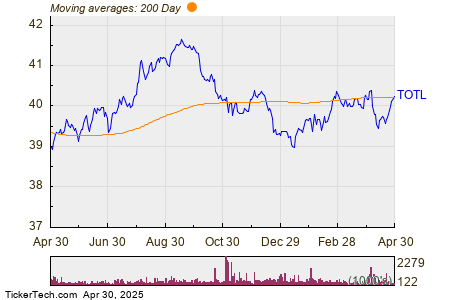Tesla Faces Challenges Amid Rocky Earnings and Controversy
There’s no question that Tesla (NASDAQ: TSLA) has had an eventful 2025 so far. Chief Executive Officer Elon Musk noted during the April 22 earnings call, “Well, it’s never a dull moment.” Tesla, usually associated with controversy, has become particularly scrutinized this year due to Musk’s involvement with the Department of Government Efficiency (DOGE), an organization created by President Donald Trump to reduce federal spending and payrolls.
Consequently, the company and its stock have been viewed through varying lenses, influencing market behavior atypically for an equity. Many Tesla owners have taken actions such as putting bumper stickers on their cars to distance themselves from Musk and express disapproval of his actions and political views. This has led some Wall Street analysts to regard him as a liability for the company, while others maintain their support for Musk, hoping he can steer Tesla in the right direction.
Musk’s credibility and his promises around fully autonomous vehicles are crucial for maintaining Tesla’s stock price, even amidst the company’s recent struggles. Currently, the stock is down about 40% from its late 2024 peak, which raises concerns that if Musk’s credibility falters, the stock may drop significantly.

Image source: Tesla.
Overview of Tesla’s Recent Quarter
Recently, Tesla reported one of the weakest quarters in its history, a result widely anticipated due to a 13% decline in first-quarter deliveries announced earlier in April. Despite this warning, the company still fell well short of estimates. Overall revenue declined by 9% to $19.4 billion, missing the average estimate of $21.4 billion. Adjusted earnings per share plummeted from $0.45 in the previous year to $0.27, which also missed expectations of $0.42 by a significant margin.
Moreover, Tesla refrained from reasserting its prior forecast for delivery growth between 20% and 30% for this year, a target that seems increasingly unattainable due to a consumer backlash against the brand. Surprisingly, the stock gained 5.4% during the trading session following this disappointing report, climbing on April 23.
This stock increase largely resulted from Musk’s spin during the earnings call, where management spent little time discussing the significant brand crisis characterized by vandalism at Tesla dealerships and a 20% decline in automotive revenue. In Tesla’s unconventional earnings call format, investors were able to submit questions prior to the analyst questions; however, no queries were presented regarding the brand’s apparent decline.
Musk instead reaffirmed plans for a robotaxi network in Austin, Texas, scheduled to launch in June with 10 to 20 Model Y vehicles, vowing rapid expansion thereafter. He asserted that this innovative initiative would significantly impact the company’s finances by the second half of next year — a vague yet promising outlook that suggests a swift rollout of self-driving vehicles. Additionally, Musk expressed optimism that Tesla would eventually become the world’s most valuable company.
Assessing Tesla’s Valuation
Currently, Tesla is poised for its second consecutive year of declining vehicle deliveries. Investors seem to have shifted their focus away from valuing the company as a carmaker, instead buying into Musk’s vision of a future filled with Tesla robotaxis. While this scenario is possible, it relies on several assumptions: Teslas must be capable of driving themselves safely, regulators need to approve the increased use of autonomous vehicles, and competition in the self-driving segment must remain limited.
Given the unique format of Tesla’s earnings calls, Musk has avoided direct questions from analysts about these assumptions. His declarations regarding Tesla’s potential to become the world’s most valuable company appear to be taken as truth without challenge.
At this juncture, Tesla seems to be valued more on Musk’s enthusiasm and forecasts rather than any measurable business fundamentals. This perception might benefit Tesla shareholders, as it indicates a floor for the stock as long as investors trust Musk’s promises. However, if the rollout of the robotaxi program fails to align with his ambitious plans, he may face challenges in maintaining the stock price.
The financial landscape continues to shift, and for Tesla, the upcoming months will be crucial in determining its market position.
See full insights on stock trends and more »
Jeremy Bowman has no position in any of the stocks mentioned. The Motley Fool has positions in and recommends Tesla. The Motley Fool has a disclosure policy.
The views and opinions expressed herein are solely those of the author and do not necessarily reflect those of Nasdaq, Inc.

